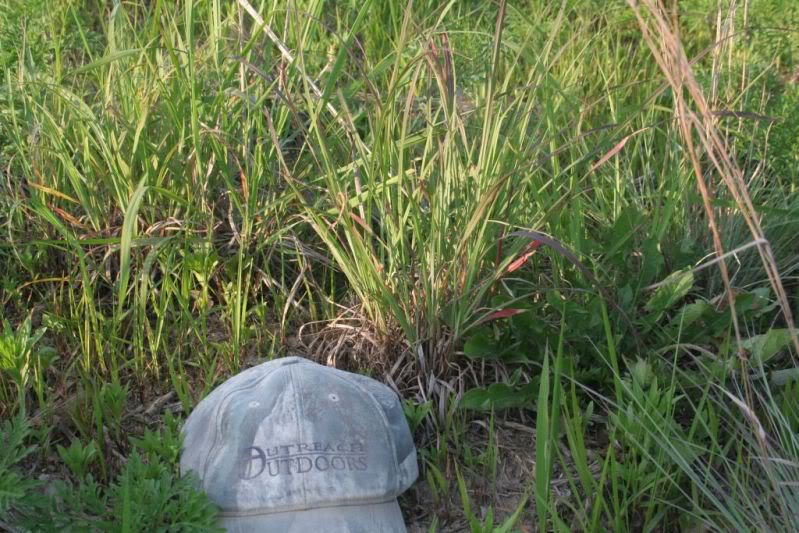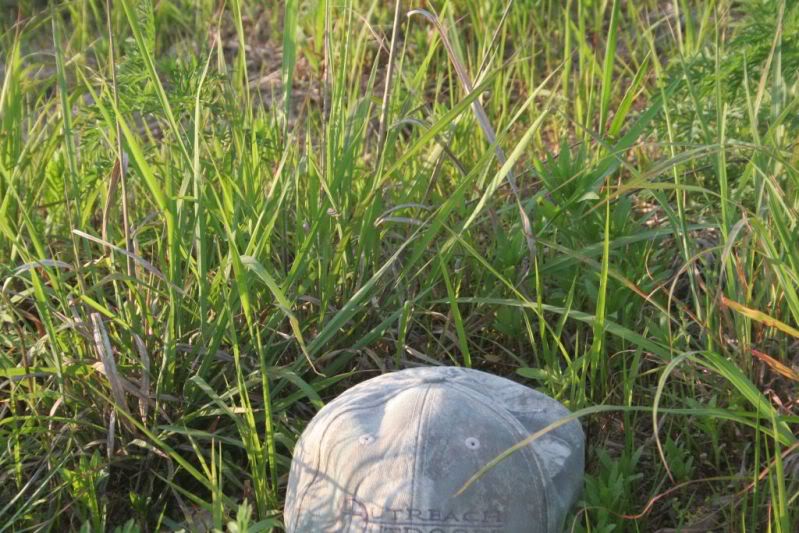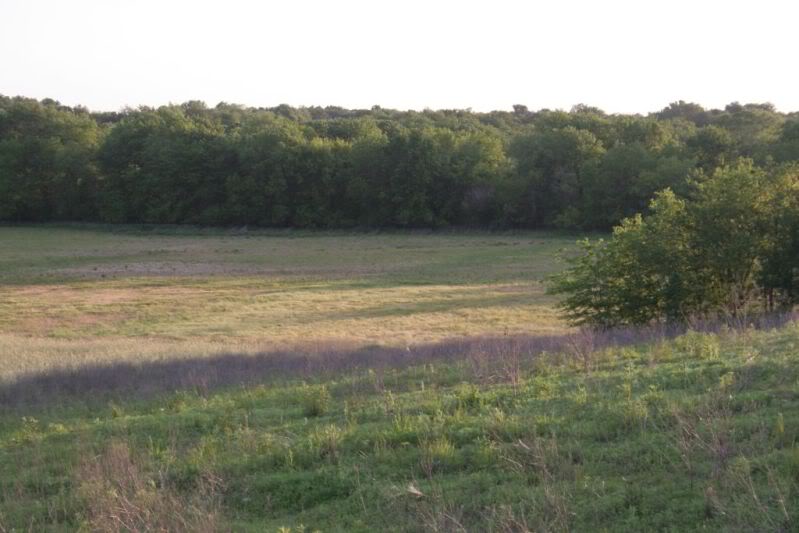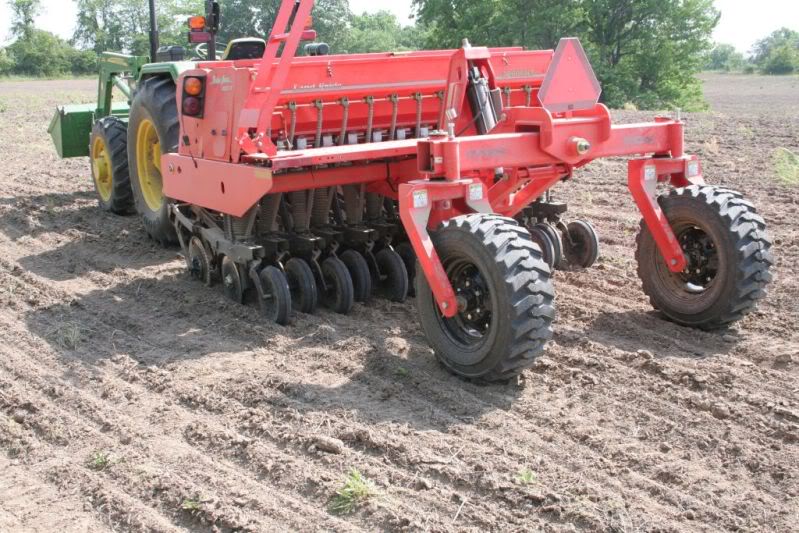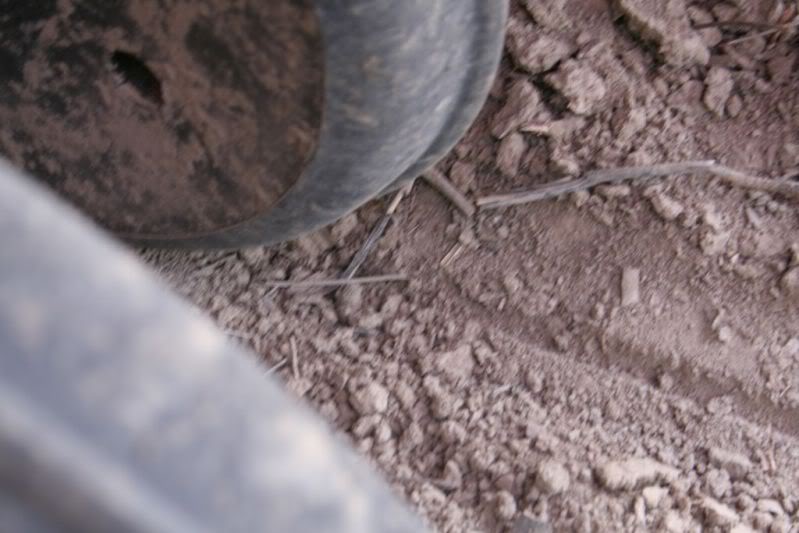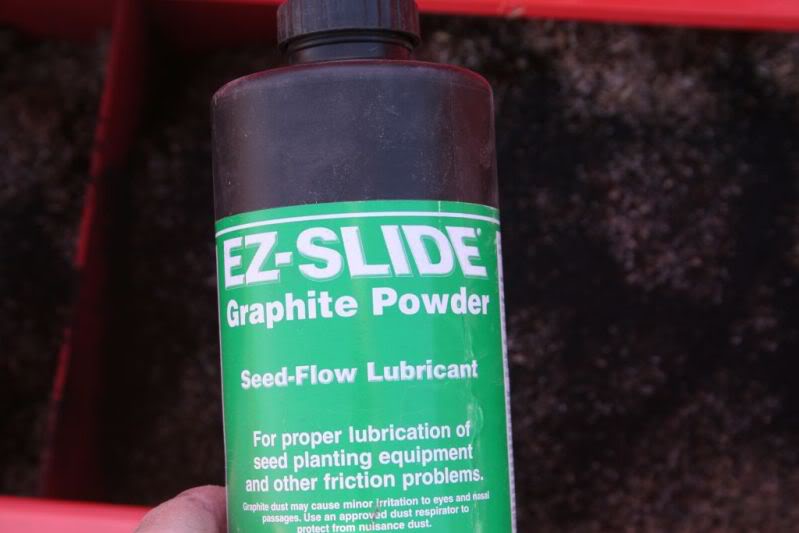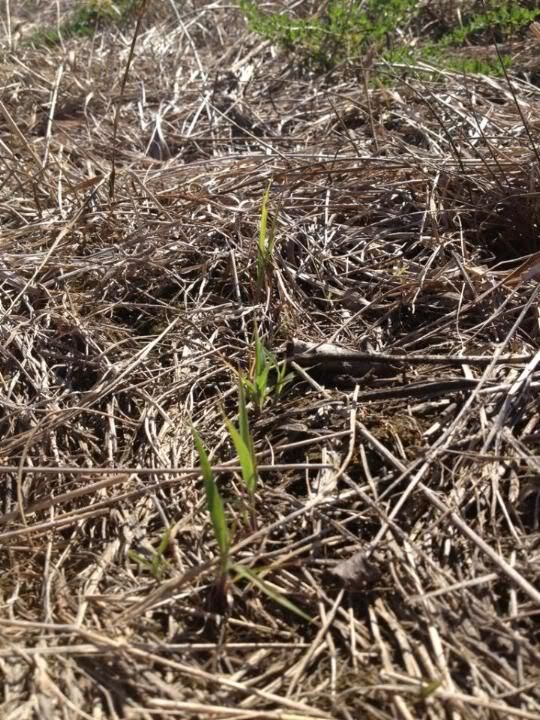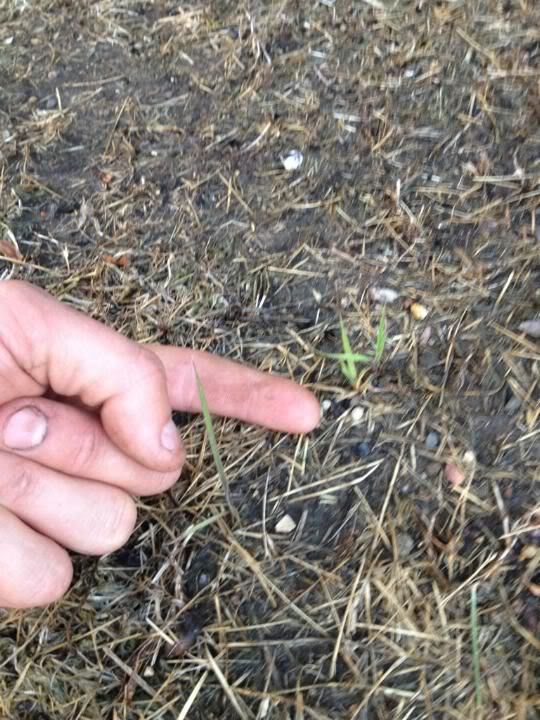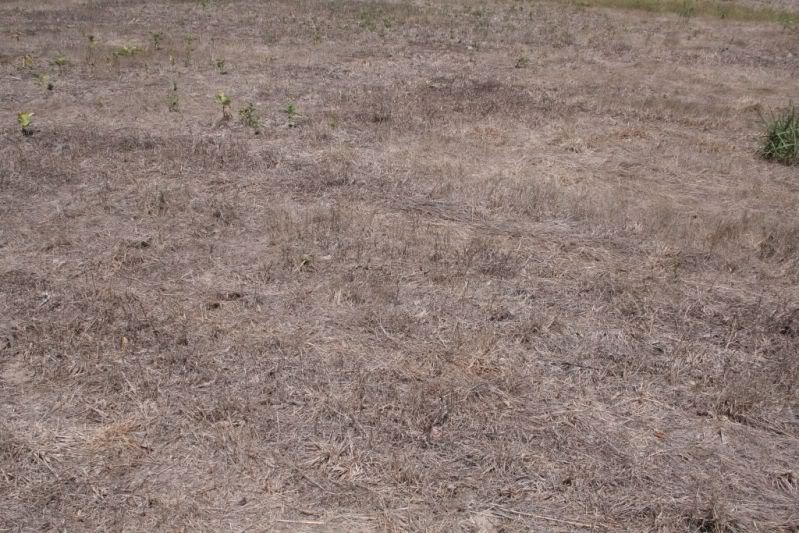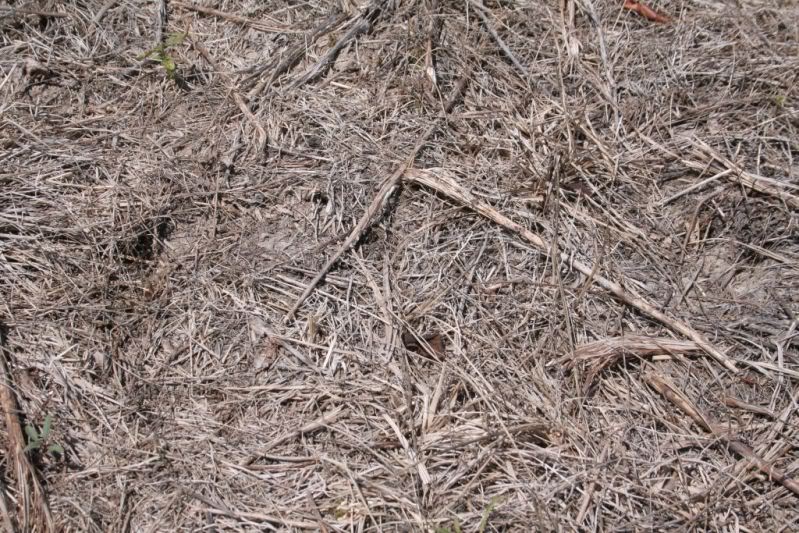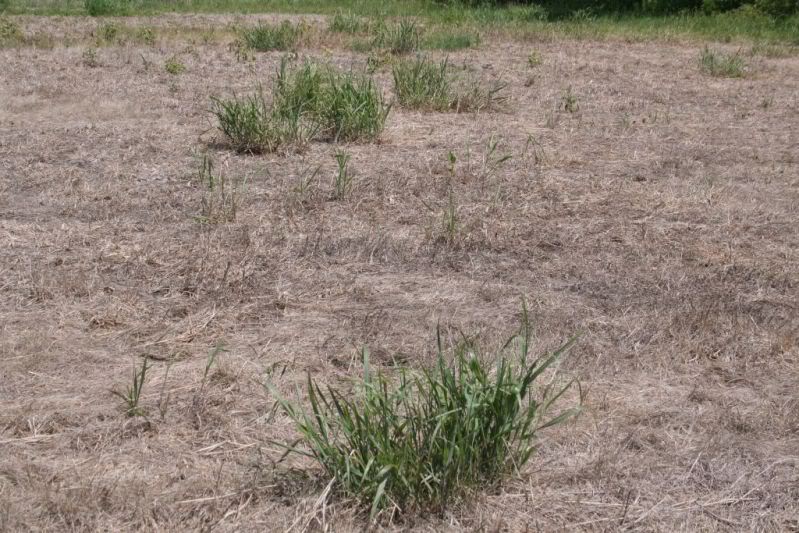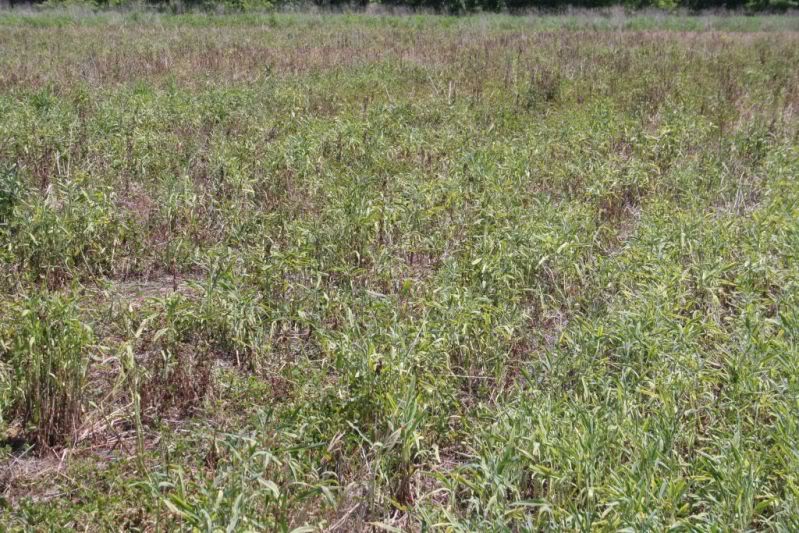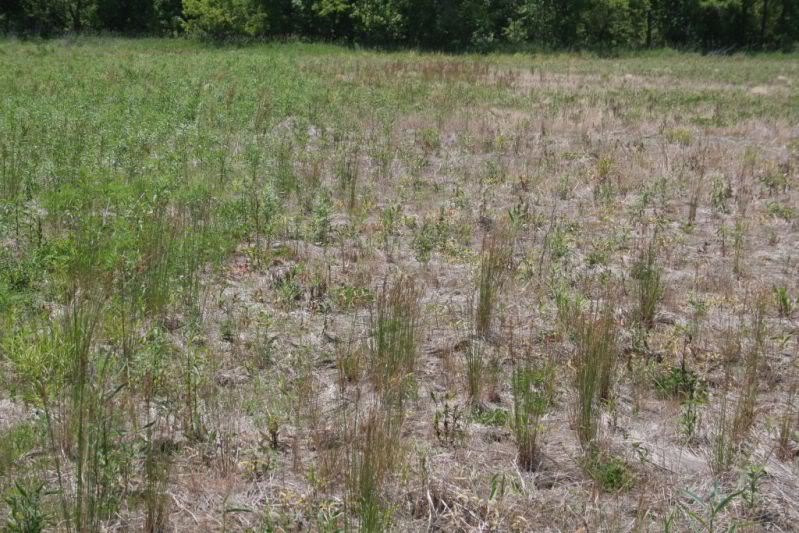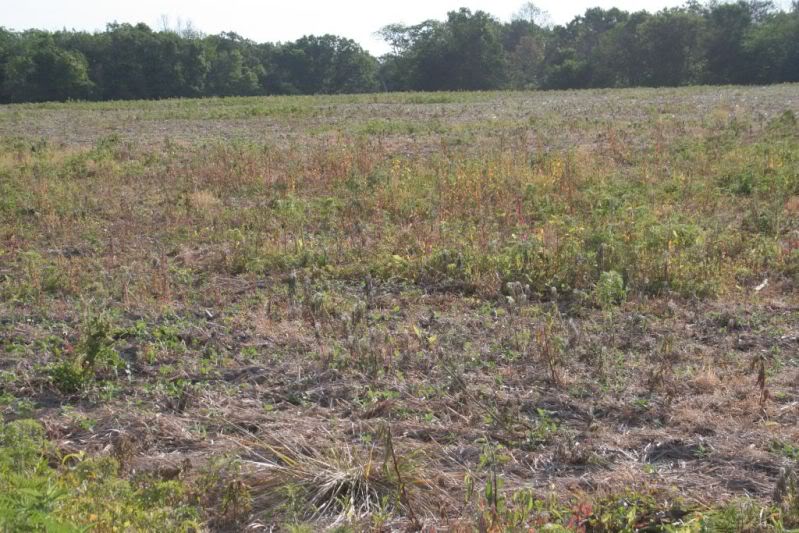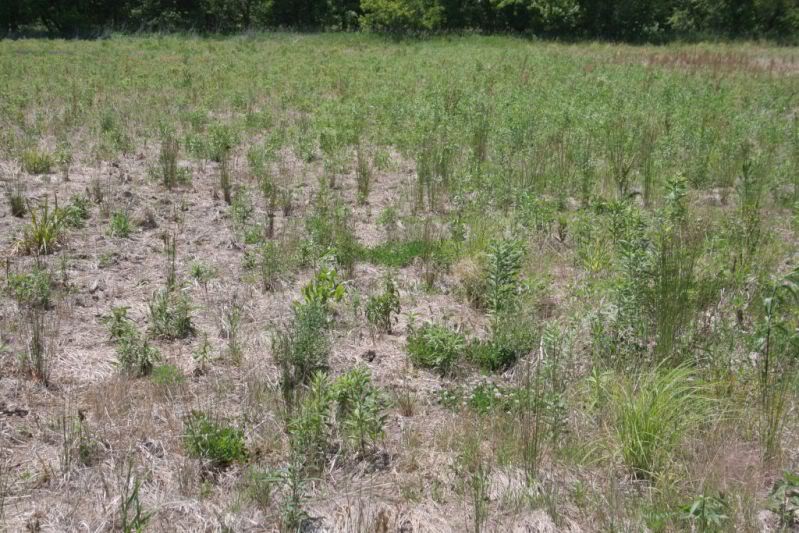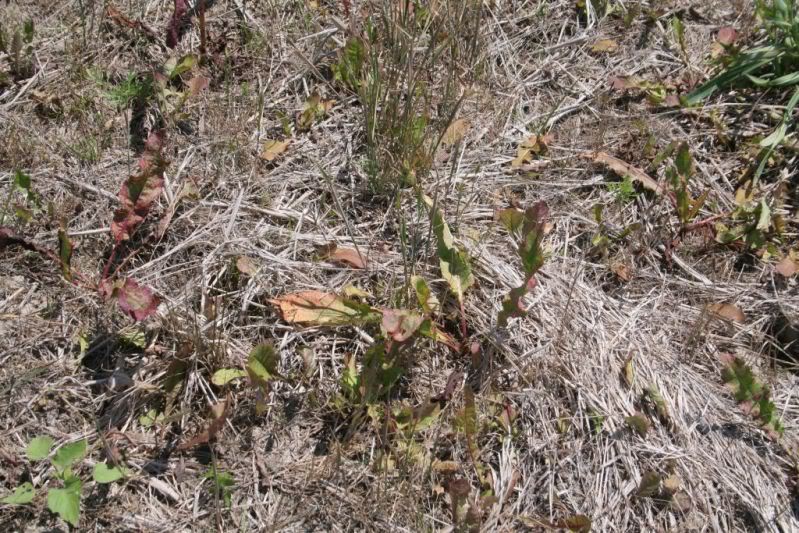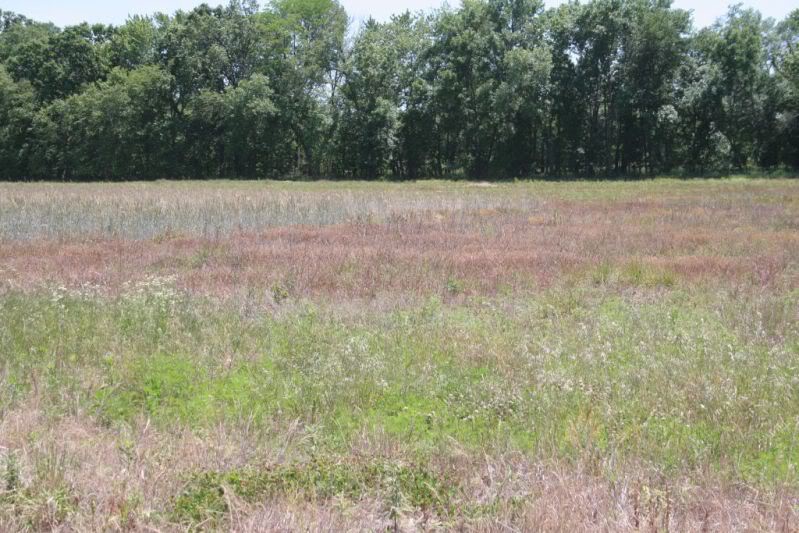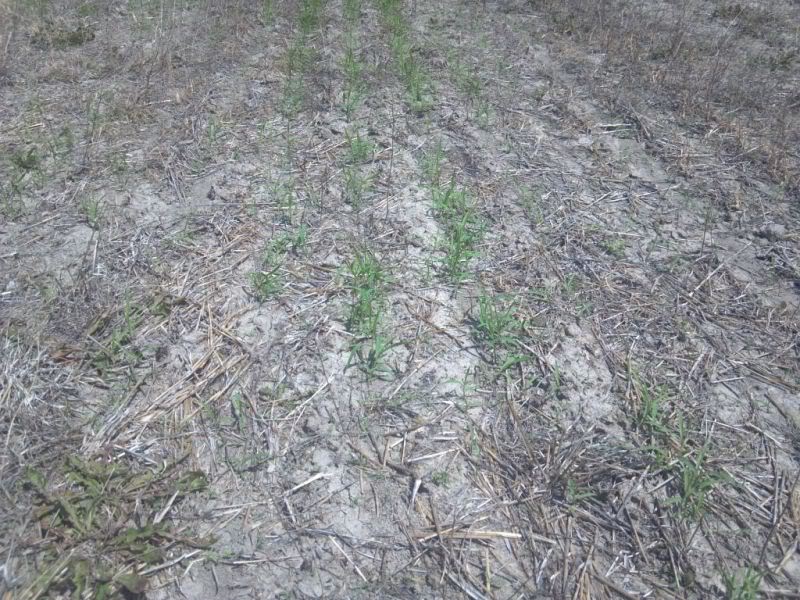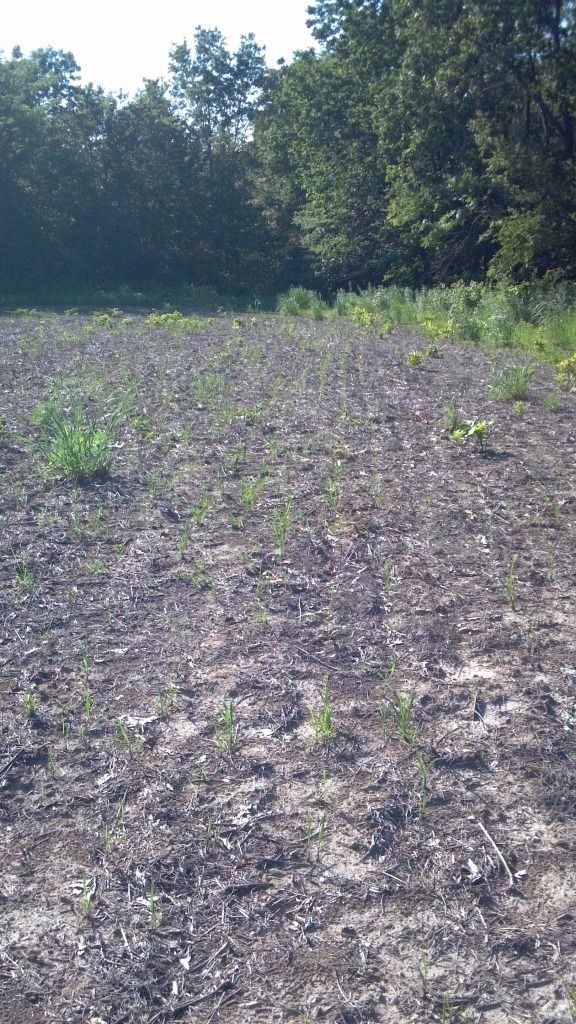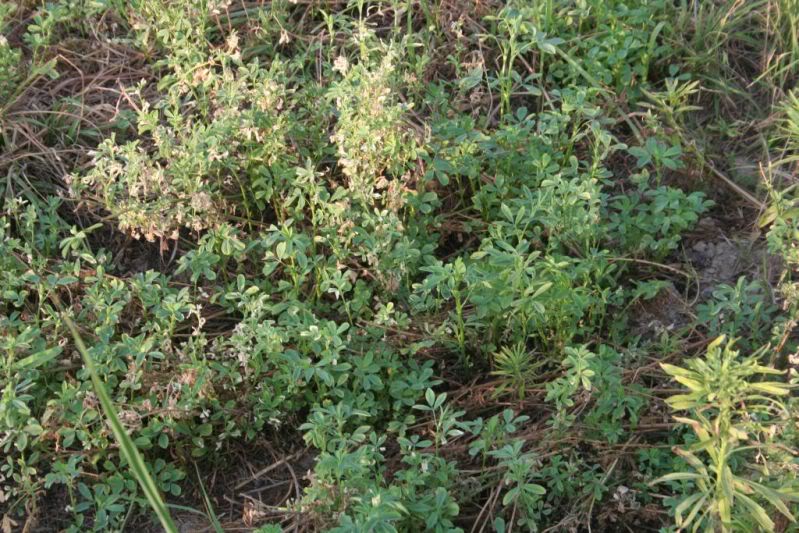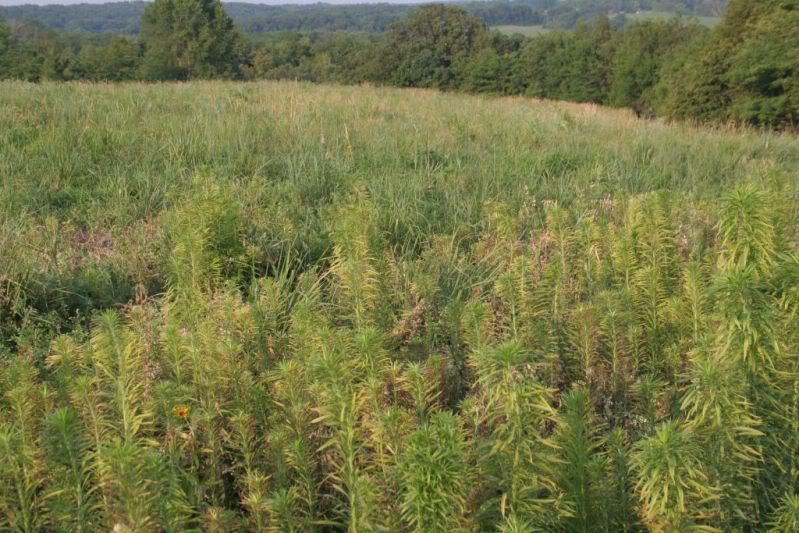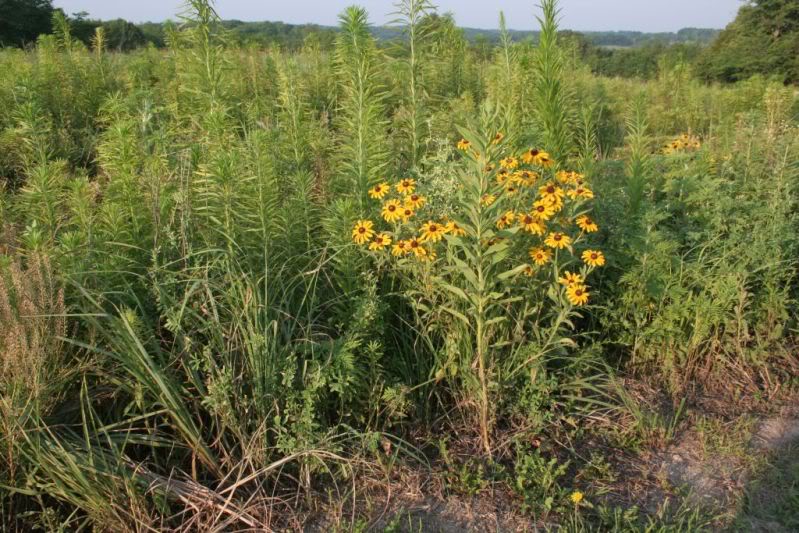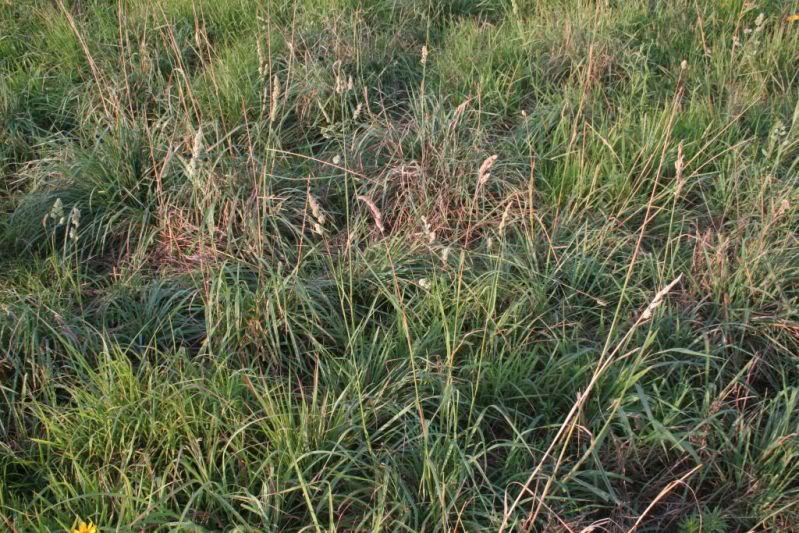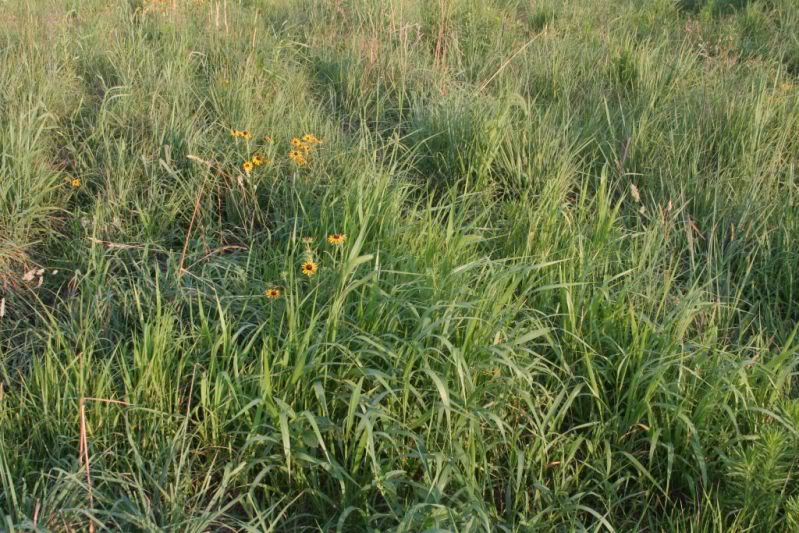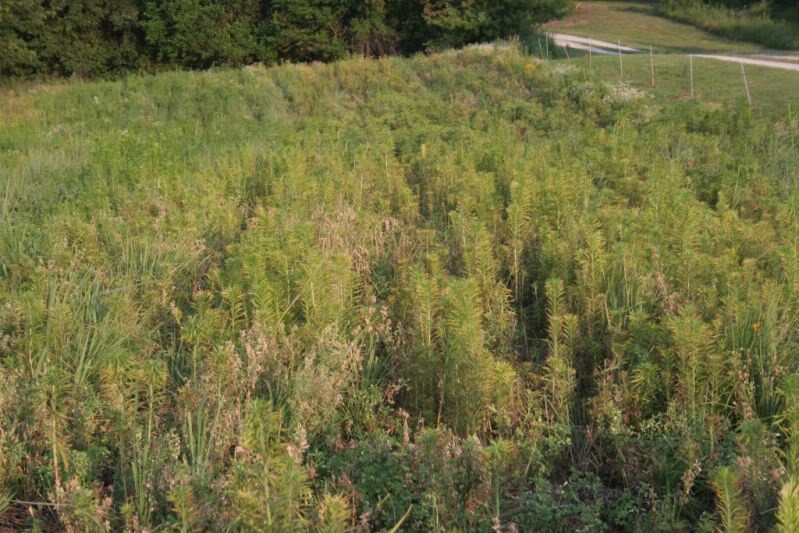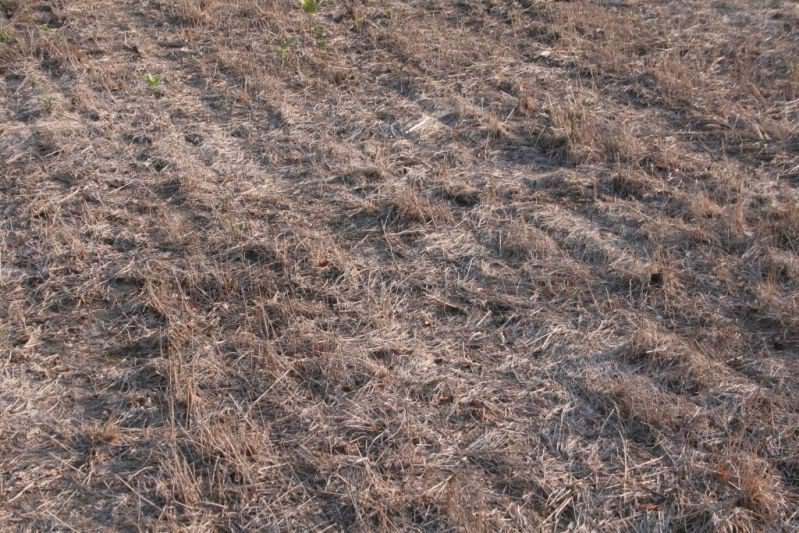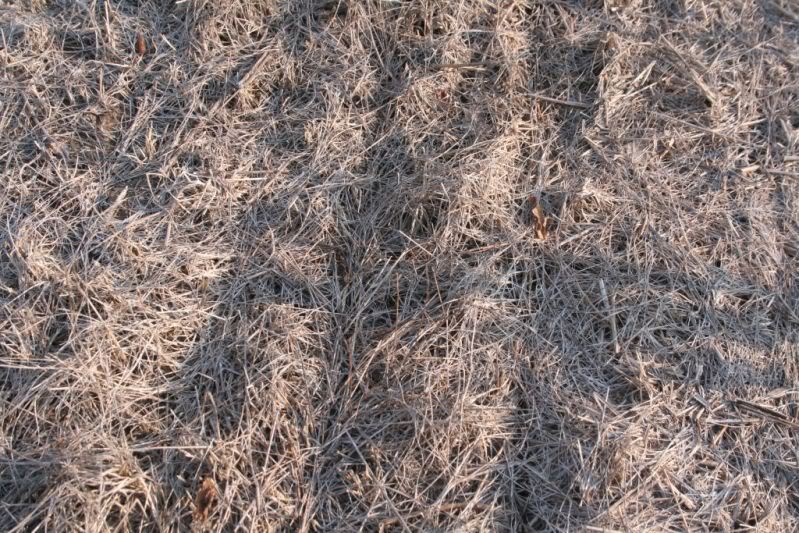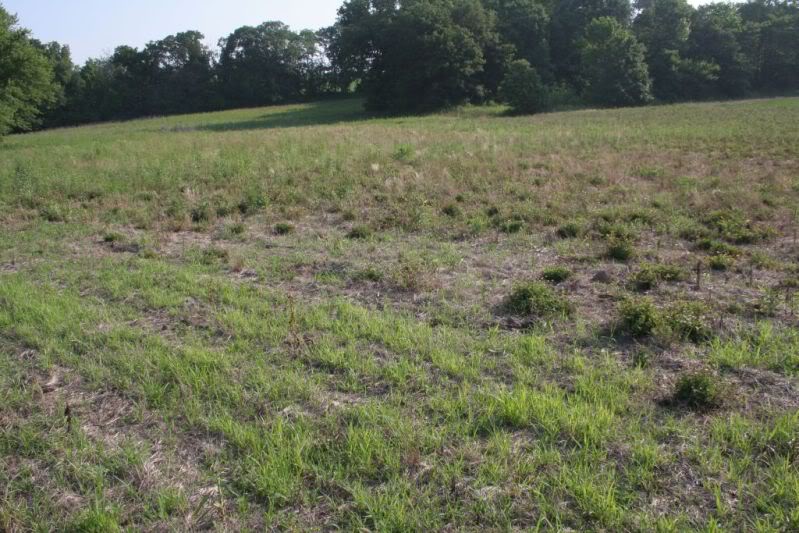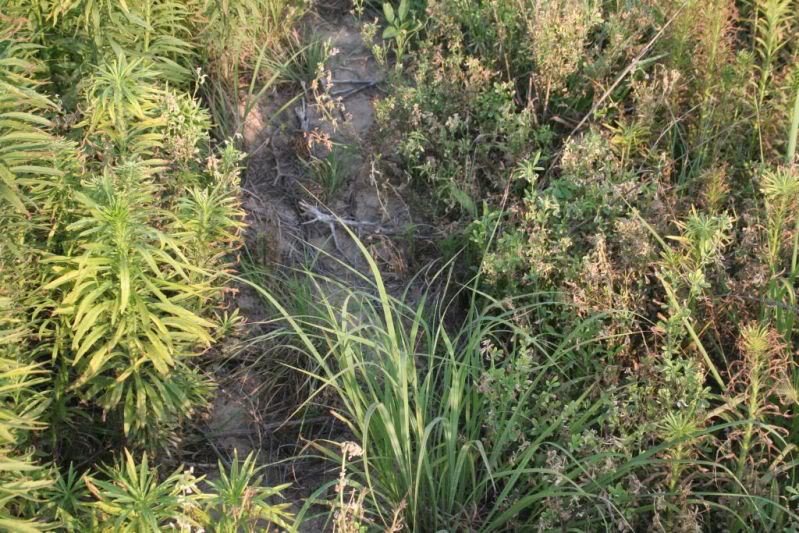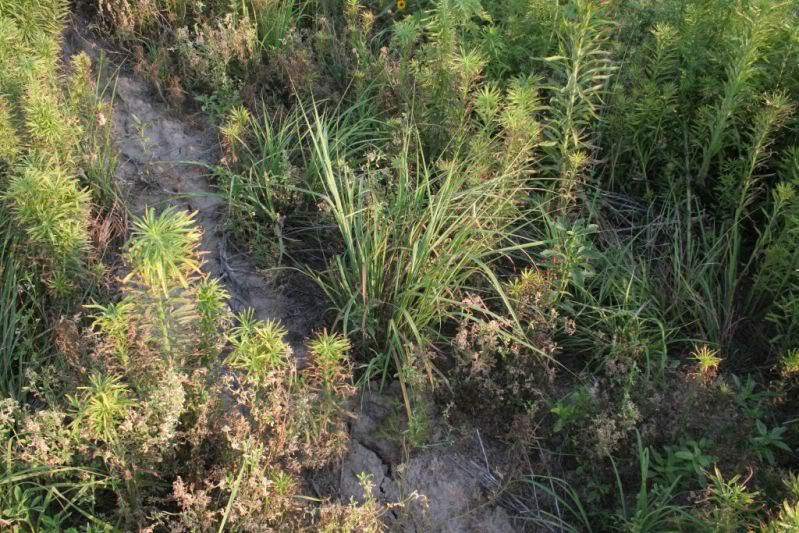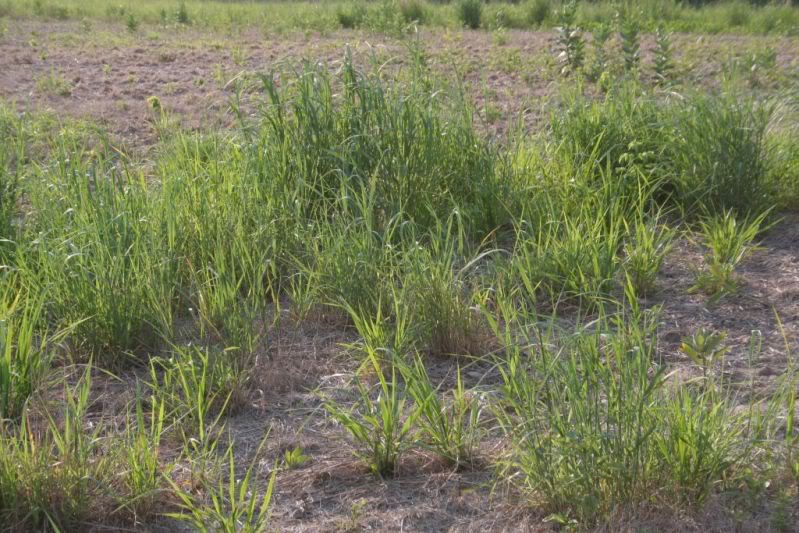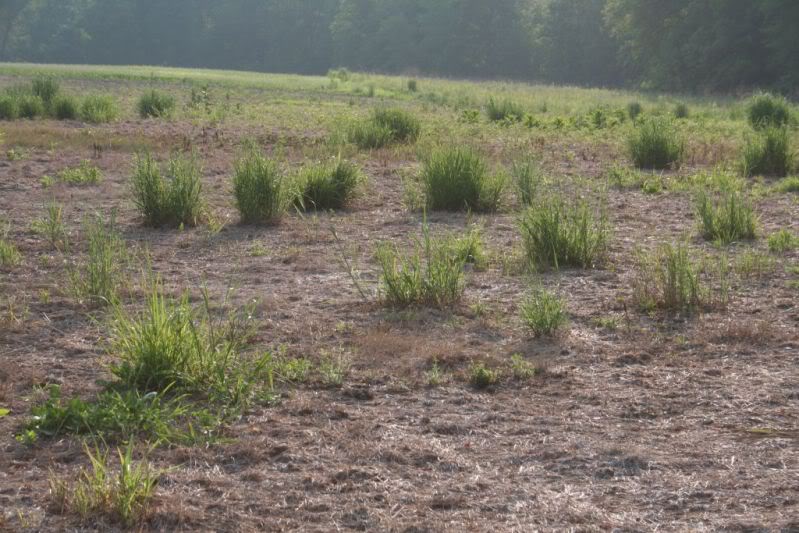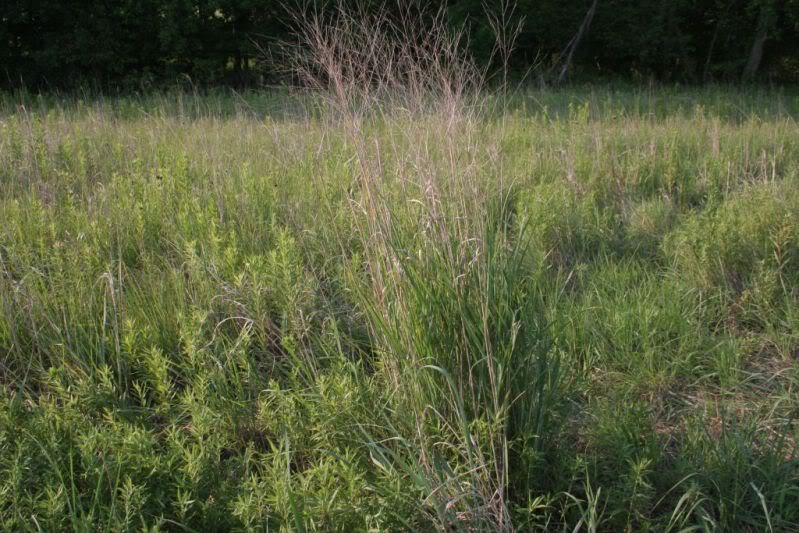June 1st, 2012
The following are a few pics of NWSG dormant seeded in early December 2009, so they are coming into their second growing season.
These pics were taken several weeks ago and the plants have grown substantially since then
The fluffy native grasses can be sown anytime from late November thru July 1st in most of the Midwest which gives most landowners lots of options. They can even be hands sown on a windy day in the winter time by casting the seed to the wind but otherwise a drill or seeder adapted to sowing fluffies is necessary (unlike switchgrass seed which is hard and easily sown with almost any type broadcast seeder)
I used 8-10 ounces of Panoramic/Plateau herbicide on this seeding last spring to control weeds and that allowed the natives to flourish although a severe summer drought delayed some growth.
I dormant seeded another area this past winter and sprayed Plateau at 10 ounces per acre on emerged weeds in the far left view of this field and you can see the "green" strip separating it from the right side where I sowed some switchgrass and used glyphosate and simazine.
I plant a lot of CRP NWSG mixes that almost always include a mix of forbs and grasses...the forb seed (wildflower type plants) look like this
The fluffy native grass seed (Big Bluestem, Indiangrass, Little Bluestem, Sideoats grama) looks like this...
very challenging to sow the fluffy seed without special equipment but enterprising folks have adapted leaf blowers and other such tools to get the job done and get seed on during the winter. The fluffies are usually not dormant seed like switchgrass often can be so they do not have to be sown in winter but like frost seeding clover....it is an option that works very well, regardless if you use a drill or sow by hand.
In my area the average landowner plants NWSG simply because they have to in order to get their land into the CRP program and most hire someone to plant the seed in the April to July 1st time frame...so May is a busy time for me! (note...soil should not be tilled before hand, something this landowner did not know)
Native grass should be planted very shallow...1/8 - 1/4" deep which is another great reason to dormant seed on frozen or semi-frozen soils....it's impossible to get seed to deep! In spring soils are often either to wet or very very dry and that creates a challenge to keep from sowing seeds to deep.
Depth wheels need to be set to a lower or even the lowest setting
Disc openers and press wheels set to the lightest setting
Constant monitoring to check the depth of the coulters in various soils
means we can spend a lot of time jumping on and off the tractor
checking to see that seeds are not being planted to deep
yet are mostly being covered
Usually a small % of seeds will be on top which tells me I am not burying the seed to deep
Because I previously used a Truax drill, the Great Plains drill requires some "by guess and by gosh" as NWSG seed is so variable and difficult to determine seeding rates. Several friends who own these drills took the time to help me get started and now and I can pass on some of what I have learned via this forum.
The Great Plains 3P806NT drill is also sold as the Land Pride 3P806NT...identical except for the paint and decals...a little like Chevy and GMC pickups.
Land Pride on one side
Great Plains on the other
So to avoid confusion...they are one in the same, mine being a 3pt with lift assist wheels to allow for trailering. This drill is very heavy weighing nearly 5000#'s empty!
A few key points....the sprockets determine the #'s per acre of fluffy seed
the following are some rough guidelines to get you started should you rent or buy one of these drills and may need to be tweaked depending on the type of fluffies you sow.
T23 = 7#
T22=8#
T21=9#
T20=10#
T19=11#
The acre meter is very accurate so I suggest weighing out an acre's worth of seed and see how close you come although the fluffies do not come out as well when the box is nearly empty.
The gear/range box will almost always be set on 1 when sowing fluffies
Use graphite on the fluffy seed to help it flow and double or triple it in hot humid weather
The back has to be leveled with a series of shims
Remember if you do not have a drill you can often rent one so check with your local NRCS office, these drills are too expensive for the average landowner but if you are blessed to own one they are very versatile tools to have in your habitat tool chest...




